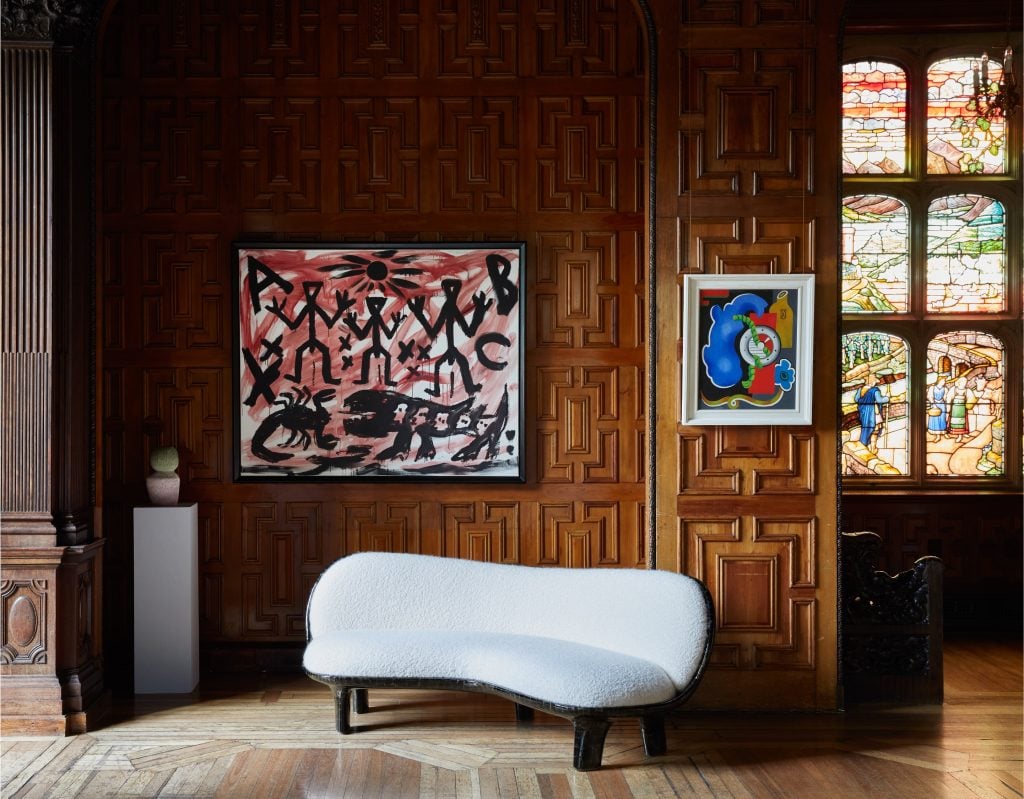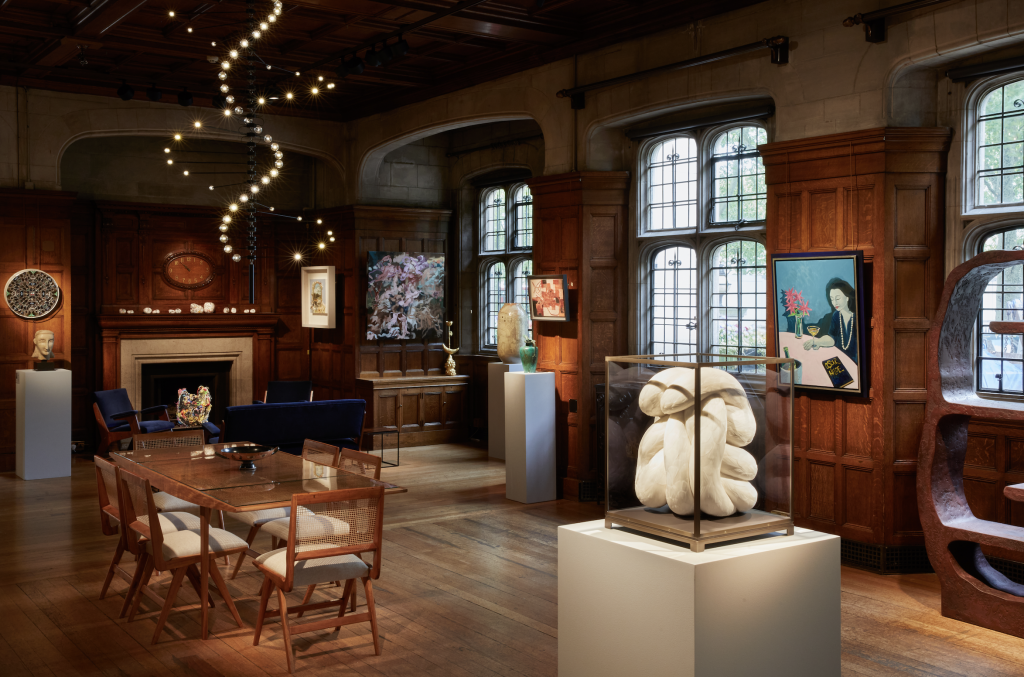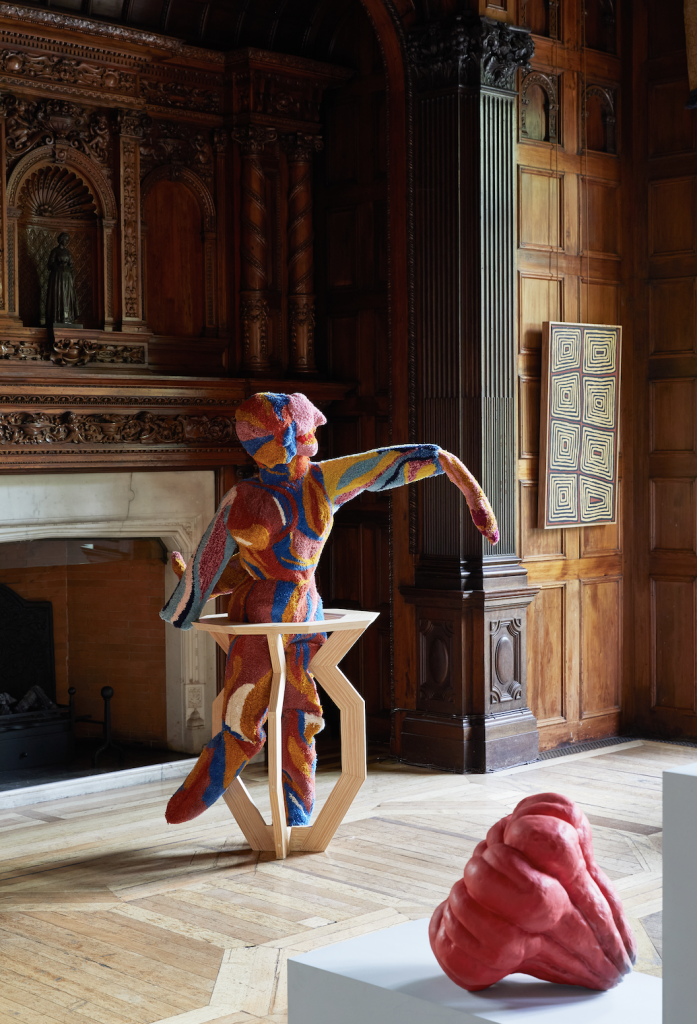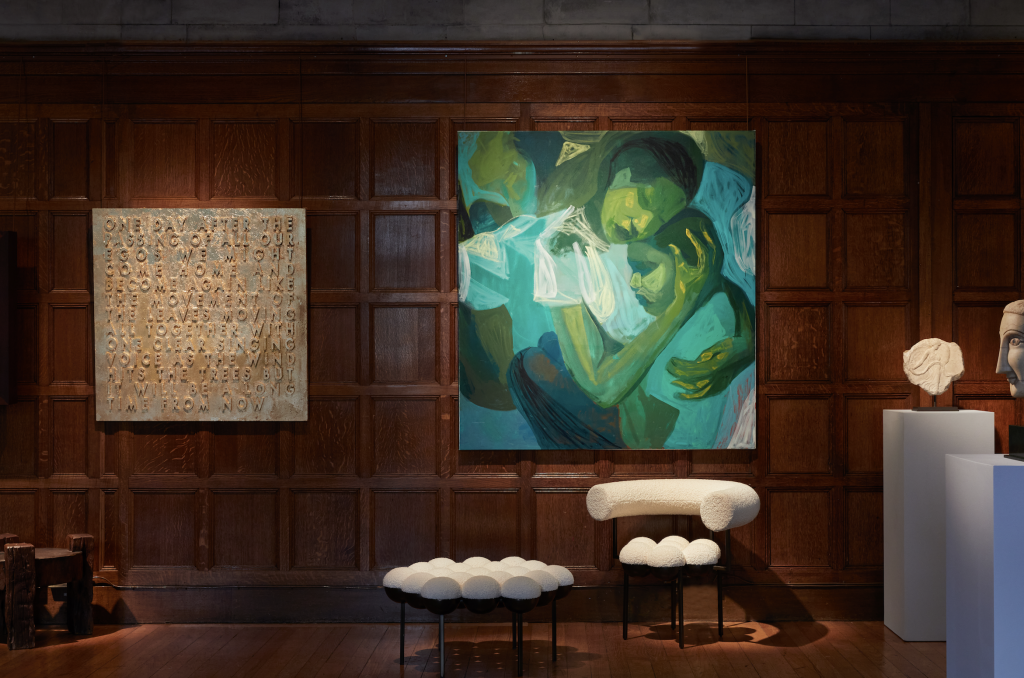Art Fairs
Eye of the Collector, the Boothless Fair Offering an Eclectic Mix of Art, Sets an Upbeat Tone Ahead of London Gallery Weekend
Early sales came in at a range of price points, from four to six figures.

Early sales came in at a range of price points, from four to six figures.

Vivienne Chow

Nearly 2,000 people attended the opening of the boutique fair Eye of the Collector in London this week, striking an optimistic tone ahead of the second-ever London Gallery Weekend and the summer art season in Britain’s capital city.
Works at a wide range of prices, from a £2,100 ($2,562) porcelain piece by emerging British artist Katie Spragg to a £320,000 ($390,686) painting by William Scott, found buyers during the first two days of the fair. The second IRL edition of the event features 24 participating galleries at the historic Two Temple Place.
The boothless presentation format, which showcases a wide spectrum of art in the neo-Gothic mansion on Victoria Embankment as if they were a part of the stunning building’s regular decor, has helped sparked the imagination of collectors, said Nazy Vassegh, the fair’s founder and CEO.
“It is not about the branding of booths as you see in most other art fairs,” Vassegh told Artnet News. “This makes you imagine living with it, ask questions, inquire, and hopefully acquire.”

Installation view of Eye of the Collector in London, 2022. Courtesy Eye of the Collector.
Prices of each artwork are also clearly listed to promote transparency. Alan Wheatley Art sold William Scott’s 1962 painting Blue and Black Still Life for £320,000 ($390,686), while Addis Fine sold paintings by two Ethiopian artists, Tadesse Mesfin’s Pillars of Life: Guleet VI (2021) and Tizta Berhanu’s Protection (2021), for £30,000 ($36,540) and £14,500 ($17,660), respectively.
Gillian Jason Gallery, which specializes in female and non-binary artists, sold paintings by Nancy Cadogan, Milan Young, Megan Baker and Eleanor Johnson for prices ranging from £2,500 to £9,600 ($3,050 to $11,713).
Meanwhile, two early paintings by Cissie Kean, Dolphin and Bottle (c. 1930) and Childhood Memories (c. 1925), sold for £9,500 ($11,568) each at Whitford Fine Art. Ting-Ying Gallery sold two monumental stoneware works by London-based ceramicist Oriel Zinaburg for around £3,500 ($4,262) each.
“Collectors are moving away from the white-cube environment,” noted Vassegh, who is also an art advisor and formerly the chief executive of Masterpiece. “Even at cross-category fairs, you go to one booth, but you might not go to the other booth. Here, you pass an antiquity next to a sculpture, which is next to a design piece, followed by a work from the 20th century and so on. It opens people’s minds.”

Installation view of Eye of the Collector in London, 2022. Courtesy Eye of the Collector.
The boutique fair also hopes to reintroduce artists who have been overlooked. One example is British painter Pauline Boty, the only woman in the British Pop art movement, whose promising career was cut short when she died of cancer at 28.
“She was pregnant, and she refused chemotherapy because she did not want to damage her baby,” Vassegh said. “She gave birth and died soon afterwards. There isn’t much of her work available in the market.” Boty’s 1959 painting titled Golden Nude is on view at Whitford Fine Art.

Installation view of Eye of the Collector in London, 2022. Courtesy Eye of the Collector.
Artist Maryam Eisler, who presented three black-and-white photography works at the fair, was pleased to see her art outside the white cube. “The unexpected contrast of traditional wood paneling and contemporary black and white photography…I think it works,” she told Artnet News. “This is a way of showing collectors how to display artworks effectively. The possibilities are endless.”
Varuna Kollanethu, director of Ruup & Form, which sold Katie Spragg’s porcelain piece Piscine (2021) for £2,100 ($2,562), said the collaborative display fostered a communal attitude “in a market that can be quite cut-throat.”
“What people are looking for now are a lot more selective. They are looking for moments, happenings, rather than frantically traveling to 100 fairs like they were three years ago,” Vassegh said. “With the right energy, they will come.”
Eye of the Collector runs until May 14.